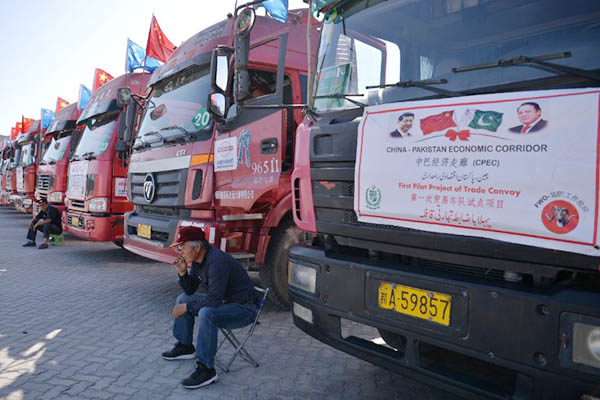
Aamir Qureshi—AFP
Pakistan and India could find common ground through trade and greater cross-border movement.
Many in Pakistan wrongly see India’s Chabahar Port linkup with Afghanistan as a hostile act because it hinders Islamabad’s operation of the Afghan-Transit Trade through Karachi. Similarly, many in India look at the China-Pakistan Economic Corridor as a potential threat due to the docking of a Chinese warship at the Gwadar deep-sea port. Both are hostile readings from a “strategic threat” perspective the rival armies are taught to learn.
But China doesn’t think so. It welcomes the Chabahar opening because it has a $60 billion investment in Iran and wants to connect Gwadar with Chabahar through road linkages. It also wants India’s participation in the CPEC project to consolidate a better return on its investment. Some South Asia watchers in the U.S. think China has got Pakistan to incarcerate Hafiz Saeed to lessen tensions in the region and promote trade through CPEC.
On Feb. 5, Kashmir Solidarity Day—or Hate India Day for many rightwing politicians and their supporters—Islamabad had to send a message of thanks to New Delhi after it returned a toddler abducted by an India-administered Kashmir husband to a Pakistan-administered Kashmir wife after a year of bilateral efforts. India broke with its past practice of not moving on exchange of nationals in trouble.
Indian Home Minister Rajnath Singh chided Islamabad on Kashmir Day by asking it to hold referendum on whether Pakistanis wanted to merge with India. Pakistan should respond by allowing India a trade route through Afghanistan, joining it with CPEC. The entire world is going to use CPEC to trade with China so why shouldn’t Pakistan attempt to profit off the $50 billion two-way trade New Delhi has with Beijing?
Pakistan has to sort out a number of issues—such as contested river waters—with India. If instead of normalization the two get tangled in hostilities then these issues will get used as pawns of war.
